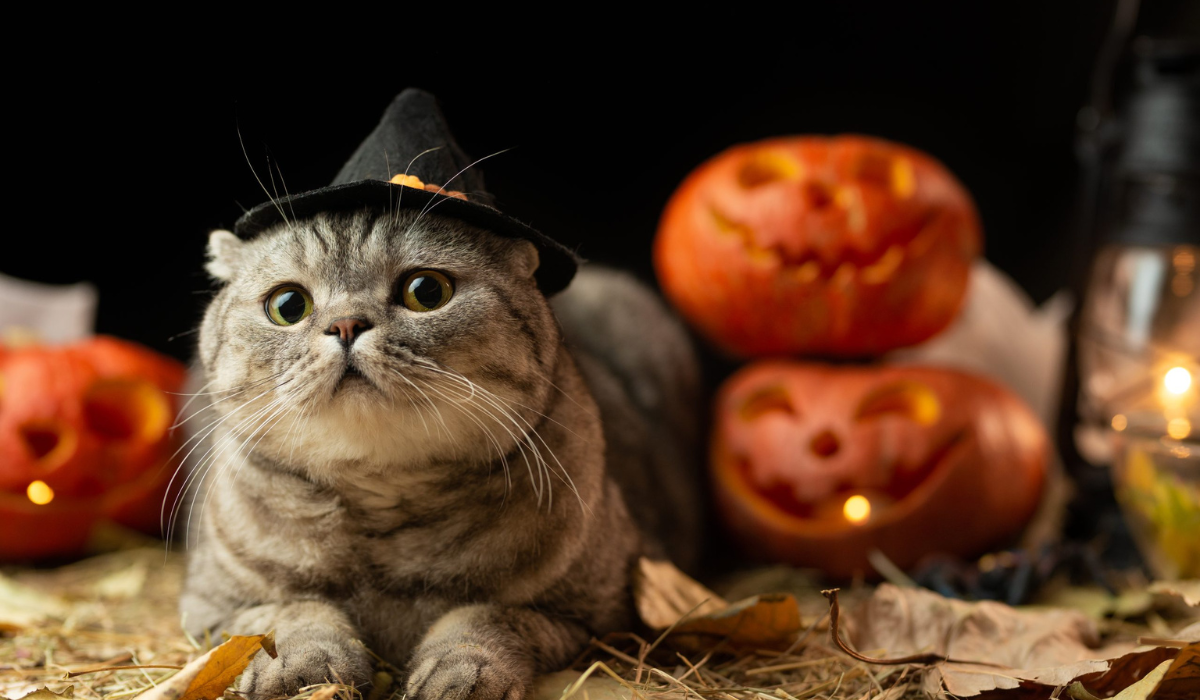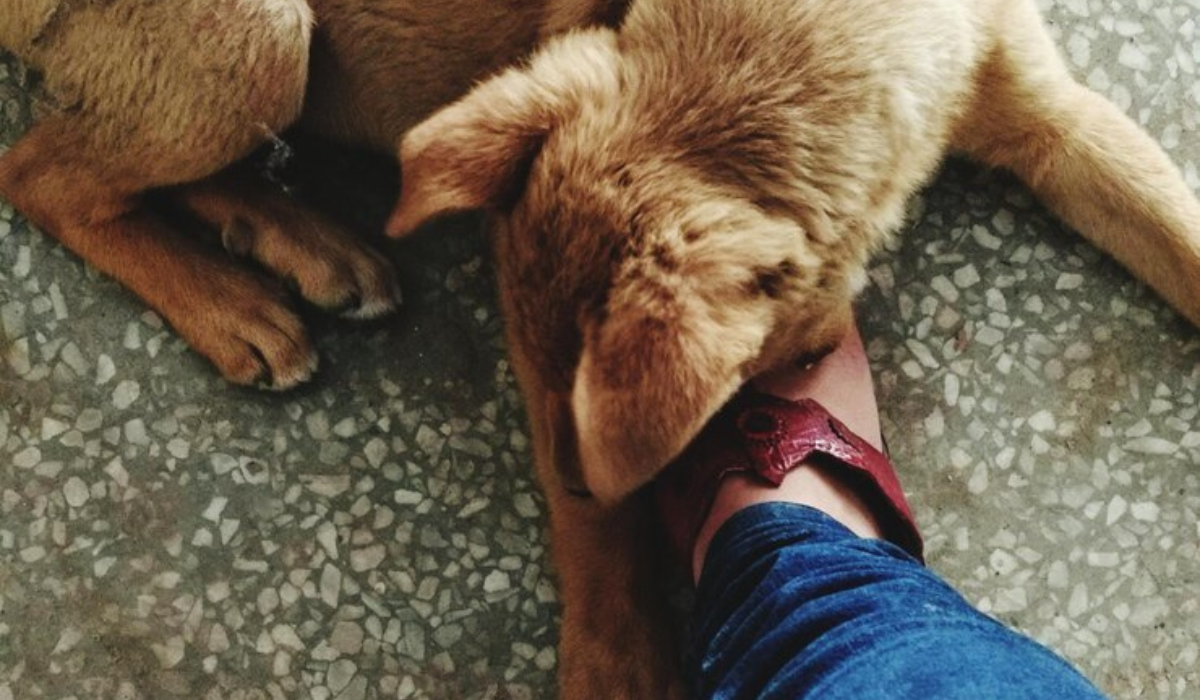Introduction:
Halloween is a fun time, but we must also consider our pets’ well-being during this season. Halloween poses many risks for your pets, from tempting treats to costumes and decorations that are unfamiliar. This comprehensive guide will explore the key precautions you can take to make sure your pet has a stress-free and safe Halloween.
Food Safety
Not all Halloween treats are safe for pets.
- Candies, including sugar-free ones with xylitol and grapes, raisins, or pumpkin seeds, can be dangerous.
- Store Halloween candy safely and avoid wrappings that may pose a choking risk.
Costume Checklist
While pet costumes are adorable, they must be carefully considered to ensure the comfort and safety of your pet.
- Make sure costumes are comfortable and allow for movement without blocking breathing, vision or hearing.
- Before Halloween, check for any choking hazards. Also, conduct a dress-rehearsal.
- Consider removing the costume if your pet seems uncomfortable.
Decoration Dangers:
Some decorations that you use to decorate your home can be dangerous to pets.
- Avoid lighting jack-o’-lanterns as pets can knock them over, causing burns or fires.
- Avoid decorations that are loud, flashing or jarring. They can startle your pet or cause them stress.
- Keep pets away from twinkling wires that are tempting to pets.
Lost Pet Prevention:
Pets can become overwhelmed by the excitement of trick or treaters, which increases their risk of escaping.
- Consider microchipping your pet and ensuring that it wears proper identification. This includes collars with ID tags.
- Avoid letting your pet run away or get scared during trick-or treating.
Other Tips
Pets should be kept in a safe and quiet place away from noise and disturbance.
- Consider using LED batteries instead of candles or open flames.
- Securing the yard will prevent escapes. This is especially important if you open the door often for trick-or treaters.
- Avoid wearing costumes that have masks, as they may block your pet’s view.
- Introduce costumes slowly and with positive reinforcement. Use decorations that are pet-friendly.
- Monitor decorative lights, electrical cords, and pets.
- Prepare an emergency plan and familiarize yourself with your nearest emergency veterinary clinic.
Understanding Pet Perspectives:
Some pets will enjoy participating in Halloween activities while others find it stressful.
- Understanding a dog’s instinct for protecting home and alerting to strangers, and a cat’s preference for quiet environments.
Halloween Stress Management:
- Place your pets in a room that is quiet before trick-or treating begins to protect them from the Halloween activities.
- Consider using a crate filled with treats and music to calm dogs who are prone run out.
- Spray feline pheromones on cats to calm them down.
- Sit outside and avoid loud knocking or doorbell ringsing.
Halloween Candy Safety:
To prevent your pets from consuming potentially harmful foods such as chocolate, gum and xylitol, keep Halloween candy in a cabinet that is locked.
- Teach children to not share their sweets with pets.
- In case of emergency, call the ASPCA Animal Poison Control Center (888-426-4435).
Dangerous Halloween decorations
To prevent stress, introduce pets to a room that is safe before you decorate your home.
- Beware of possible hazards when decorating, such as rubber eyeballs and glow sticks.
- Pet-friendly holiday decor is a great way to get pets involved in the festivities.
Pet Halloween Costume Caution
When choosing a costume for your pet, consider their personality and tolerance.
- Watch costumed pets to ensure comfort and freedom of motion.
- Remove any objects or chewable pieces that may pose a risk of choking.
- Remove the costume if your pet seems uncomfortable.
Protecting pets from outdoor dangers
Bring your pets inside before the nightfall, particularly on Halloween.
- In case your pet escapes, make sure they have a microchip and a current ID.
- Pay attention to wild animals, particularly during Halloween.
Play Noises Inside Your Home:
Play YouTube fireworks sounds to desensitize pets to loud noises.
- Increase the volume gradually during play.
- Continue with your normal activities and show that you are not bothered by the noise.
Microchip:
Make sure your pet is microchipped for easy identification in the event they escape.
- When scanned, the microchip will contain your personal information. This helps to reunite lost pets with their owner.
Create a safe space:
Create a quiet, private space away from noise and other activities in your home.
- Consider using collars and sprays that reduce anxiety.
- To drown out the background noise, turn on your radio or television.
Pet costumes:
Some pets may find costumes unnerving.
- Make sure costumes are comfortable and do not contain any chewable items.
- Never leave your pet alone while it is dressed up.
Trick or Treat?
Keep chocolates and sweets away from your pets.
- Pets can be harmed by toxic substances like Theobromine or Xylitol found in chocolate and sweets.
- Teach your children to not share their treats with animals.
Keep them indoors:
Keep your pets inside during the weeks leading up to Halloween. This is especially important during “practice” fireworks preparations and bonfires.
- Reduce the chance of your pet getting scared, running away, or becoming lost.
Conclusion:
Follow these tips to ensure that your pets have a fun and safe Halloween. You can take proactive measures to ensure that your pet is protected from harmful treats and stress, and prepare for any outdoor escapes.









